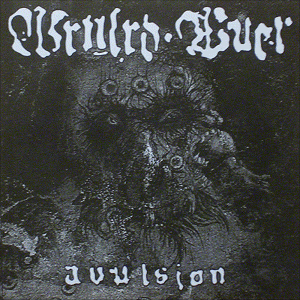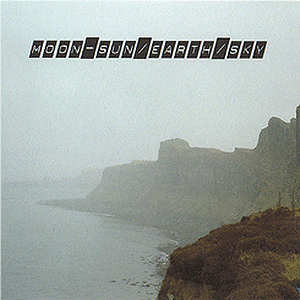Milanese - Extend (Planet Mu 2xLP)

I'll probably be forever catching up on 2006 albums I missed until, like, September so sit tight till then if you're looking for new jams (besides, has anybody important released anything yet? Deerhoof and the Shins don't count). I downloaded Milanese's "Extend" when it came out in November I think and then only got around to hearing it around the beginning of January, then I had to actually buy it which involved online ordering and shipping, and then I only had actually owned the physical product as of today. So there's the backstory. But I've been making up for lost time because, if I can allow myself to sound like the biggest 21st century cliché/tool on the planet, it has been a total iPod mainstay since the first second I heard it. And the best part about it is that I couldn't even remember where I'd been recommended the album or why I downloaded it, so it was like this gift from the heavens delivered unto me! I love serendipity! Of course I later re-traced it to the Aquarius Records records of the week list, which is pretty much where most things I download and don't later recognize come from. I'm not at all attuned to the electronica/IDM/dubstep/whatever it's called these days scene, in fact most of my encounters with the genre come from skimming past the Electronic section in the Wire's Soundcheck on my way to read more Wolf Eyes reviews (ha ha!). Or sometimes I pick up the XLR8R magazine when there's nothing else to read in Chapters before putting it down in favor of Body Building Weekly (ha ha ha!). But, like I always tell myself before my head hits the pillow at night, I know what I like. And I like "Extend".
My first reaction upon listening to the whole thing was "wow it's like everything I was promised when I heard about the Burial album", but then I decided that wasn't really fair since I only heard like three of the Burial tracks and plus I wasn't doing homework or housecleaning at the time which everybody says is the ideal thing to be doing when you're listening to Burial because It's A Background Album, You Know. So instead I thought about Milanese in conjecture to Burial and dubstep and all that and I changed my line of thinking to "wow it's like everything I was promised when I heard about grime/dubstep/trip hop/music being made by human beings". Well, for at least the first half of the album anyway. The first LP contains some of the best music I heard out of anything else from 2006. "Mr. Bad News" is a head-spinning stomper with some of the fattest, sludgiest beats this side of Electric Wizard colliding with cut siren loops and some marble-mouthed English individual speaking in tongues I can't quite understand. But it's the beats that take center-stage, exploding and splattering against eachother as they force their way through the speaker, all rough and mangled and sinewy. The approach is remarkably simple (and sure to remain in your head for the rest of the week), but the result is strikingly effective. "Dead Man Walking" features U.K. grime upstarts Virus Syndicate who spit garbled ham-radio transmissions across Milanese's Orson Welles/apocalypse landscape, and would easily be the best song on any album housing it except for the fact that the next song, "Caramel Cognac", an absolute stunner and surefire candidate for song of the year if only more people heard it. Milanese does a tremendous job stacking a series of crunchy, wobbly, DnB un-rhythms but renders the song that much more unforgettable with the addition of equally-disorienting female vocals, seemingly chopped up syllables and not exactly words per se (I've heard the song like fifty times and I still can't pick out anything exact). The triumphant horns at track's conclusion don't come across nearly as kitsch as they should, especially with a song that really is this grandiose, for all its subtleness. You want to talk pocket symphonies? Get back under the covers, Brian Wilson. I'm not even sure who's rapping on "Peggy Flynn III" but Milanese juxtaposes/tarnishes it with a disjointed, electro meltdown to produce one of the finest grime tracks I've come to know. "Mr. Ion" is back to the simple, face-slapping beats brought on previously by the album's opener, conjuring up an atmosphere like walking through a train yard at four in the morning listening to µ-Ziq on a Walkman whose batteries are all but dead. "Barry" is none more reassuring, built around a sample citing "I did not murder him" and sounding like a Mr. Hyde version of Aphex Twin's "We are the Music Makers" only eschewing the smarmy irony of the former and going for all out suffocating bleakness - suffocating bleakness that could still move a dancefloor! Unfortunately it's around here that "Extend" stops being "classic album" quality and really more not much more than a collection of a few incredible songs - the groove on "Sight Beyond Sight" is all too simple and not for the better. Especially at six minutes, it sounds more like filler than a genuinely good idea. And for whatever reason the last three tracks all sound like they could've been album closers - the longest is two and a half minutes and none contains more than a brief smattering of sound. Although the near-Merzbowian static rush of "Boss Eye" is impressive, "One Eye" is just a few dark synthy tones and "Tony Sombrero" features a gentle piano, ominous violin, and Milanese's trademark symbiote samples like dark swamp much creeping up your leg. - something that would've worked fine as an outro track if the two preceding it had been spread out elsewhere on the album, but barely registers as it is.
It's a slightly disappointing finish to an otherwise astonishingly great album, made that much more impressive by the fact that it's Milanese's first full-length. With any luck he'll have learned from his mistakes the next time around and puts out a non-stop slammer from start to finish, but for now we'll have to "settle" for the unbalancedness of "Extend" - pretty good for an album we'll probably be hearing about for a long time to come. And one I'd recommend in an instant - just so we have my position down on record.

















